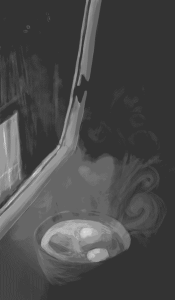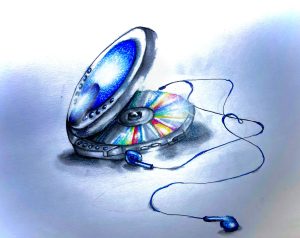 It’s a Thursday, and you’re peering out the train window with your earphones jammed in and cranked up to proclaim “thanks, but no thanks” as loudly as possible without having to say anything. You blink your eyes wider to stay open against the sting of a late night, and staring at your monitor for ten hours today. (Every day.)
It’s a Thursday, and you’re peering out the train window with your earphones jammed in and cranked up to proclaim “thanks, but no thanks” as loudly as possible without having to say anything. You blink your eyes wider to stay open against the sting of a late night, and staring at your monitor for ten hours today. (Every day.)
There’s a four minute walk with eighty-seven stair steps between the station and your apartment, but you know that two minutes in there’s an Asian grocery.
This is how to heal yourself with pork bone soup:
- Buy whatever pork bones are available; they’re still not considered the gold they are unless it’s some hipster-ass store in the city, so however big the bag is, it’ll be cheap. It’s your first real job and your first real apartment. You can’t afford anything else.
- Also daikon, chopped into big pieces. Dried cuttlefish that your mom slipped you last time you were home. A nubbin of rock sugar, splash of soy, lots of cracked black pepper. You try to ask Popo how big the nubbin is and she shrugs, gestures vaguely at the first knuckle of her forefinger, and grins at you.”
- Boil the bones first in a big pot, and skim the stuff that floats to the surface. Mum calls them “impurities”. She stands at the stove, hand on hip, warm glow of the stove light making the steam look like billowing clouds. She dumps the muck into a blue and white striped mug.
- Turn the heat down and pile everything else in. Salt last; not too much, but more than you think. Lid goes on. It’s ready when the daikon splits with a spoon-edge press.
- Pour yourself a bowl and sit on your bed. The tiny window in the tiny apartment is cracked as much as possible. There’s thin light seeping in over the top of the next building; it’s your only view.
- Take your first inhale. It smells like a night when dinner isn’t ready until Dad gets home late. Everyone stays up watching scary movies even though mum faux-complains, and Dad falls asleep before the credits roll on the first one.
- Sip a small spoonful – careful, it’s always too hot. It tastes like sitting at Koong Koong and Popo’s table for hours after eating. You watch Koong Koong peel fruit and feel victorious, because it’s not your turn to wipe down the vinyl tablecloth.
- Bite into a piece of daikon. It’s not even biting really – it’s so soft it smoothes along your tongue and melts away.
- Notice the rich flavour. It’s salty, a little bit sweet, and deep. You can feel the heat curl and creep around your fingers, your toes. It slides up your arms and legs to meet in the middle, a glowing, happy belly. It’s warm, but it’s also warmth. This is how it heals. Mum smiles from over your shoulder, and Popo pats your hand.
- To finish, slurp directly from the bowl. There is no other way.
Repeat as many times as needed. I hope you feel better.



